When it comes to heating your home with a log burner, choosing the right type of firewood can make all the difference. The right firewood will burn cleanly, produce little smoke, and provide a good source of heat. In this article, we’ll explore the best types of wood for log burners, how to properly season and store firewood, and tips for using firewood in log burners.
Types of Wood for Log Burners
When it comes to using a log burner, hardwood is generally considered to be a better option than softwood. This is because hardwoods are denser and contain less moisture than softwoods, which means they will burn hotter and for longer periods of time. Hardwoods are also less likely to produce excessive smoke or creosote buildup in your chimney.
Softwoods, on the other hand, are less dense and contain more moisture, which means they will burn faster and produce less heat. Additionally, softwoods can produce more smoke and creosote buildup in your chimney, which can be a fire hazard and require more frequent cleaning.
That being said, there are some softwoods that can be suitable for use in a log burner, such as pine and spruce. These softwoods can be burned in combination with hardwoods to help kindle a fire, but they should not be relied on as the primary fuel source.
Overall, while softwoods can be useful in some circumstances, hardwoods are generally considered to be a better choice for log burners due to their higher density, lower moisture content, and higher heat output.
Here are some of the best types of hardwoods for log burners:
Oak
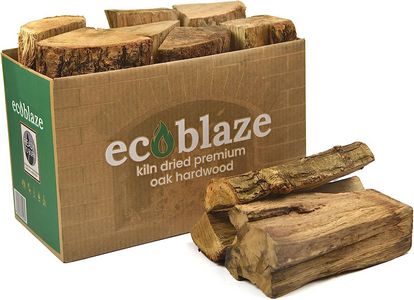
Oak is a popular choice for log burners because it is a dense hardwood that burns slowly and hot. The density of oak means that it has a high heat output, so it can provide a lot of warmth for your home. It also burns for a long time, which means that you don’t have to constantly add more logs to your fire.
In addition, oak produces a low amount of smoke, which means that it is less likely to cause creosote buildup in your chimney. Creosote buildup can be a serious fire hazard, so it’s important to choose firewood that produces minimal smoke.
Overall, oak is a reliable choice for log burners because of its high heat output, long burn time, and low smoke production.
Maple
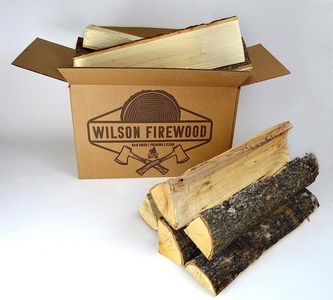
Maple is a good choice for log burners because it burns cleanly and produces a lot of heat. It is a dense hardwood that has a high energy content, meaning it can produce a lot of heat with relatively little wood. Maple also tends to burn for a long time, which means you won’t have to continually add logs to your fire. Additionally, maple produces minimal smoke and creosote buildup, which is better for the environment and safer for your chimney. All of these characteristics make maple a great option for anyone looking to heat their home with a log burner.
Ash
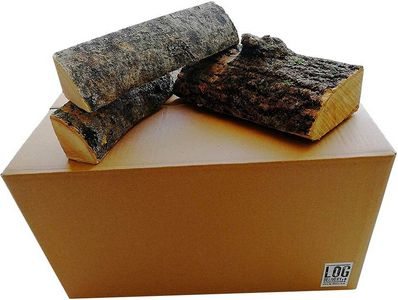
Ash is a popular choice for log burners for several reasons. Firstly, it is a hardwood, which means that it is dense and burns hot. This means that it can provide a lot of heat for your home and also produce a long-lasting fire.
Secondly, ash is known for producing little smoke, which can be beneficial for the environment and for the health of those in the surrounding area. This is because smoke contains pollutants such as particulate matter and can contribute to poor air quality. By choosing firewood that produces little smoke, you can help to reduce your impact on the environment and also improve the air quality in your area.
Finally, ash is known for its ability to produce a bed of hot coals that can last for hours. This means that you can continue to benefit from the heat produced by the fire even after the flames have died down. Additionally, the hot coals can help to ignite new pieces of wood and keep the fire burning efficiently.
Overall, ash is a great choice for log burners because it is dense, produces little smoke, and can produce a long-lasting fire with hot coals.
Birch
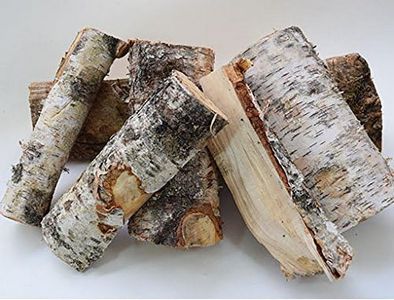
Birch is a good choice for log burners because it is a hardwood that burns cleanly and produces a lot of heat. Birch wood is known for its high energy content, which means it can produce a lot of heat when burned. It also has a relatively low moisture content, which allows it to burn efficiently and with minimal smoke.
In addition to its practical qualities, birch wood also has an attractive white bark that can add aesthetic appeal to your log burner. Birch bark is also highly flammable, which can make it a good choice for starting a fire.
Overall, birch is a great option for log burners because it burns hot and cleanly, making it an efficient and effective choice for heating your home.
Beech
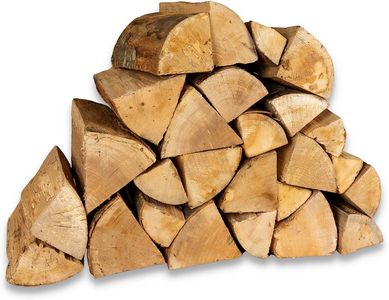
Beech is a good choice for log burners because it is a dense hardwood that burns slowly and produces a long-lasting fire. Its dense nature means that it will burn for a longer time compared to some other types of wood, which makes it an efficient choice for heating your home. Additionally, beech wood burns hot and produces a lot of coals, which can also help to keep your home warm for a longer time. It is also relatively easy to split and has a low moisture content, which makes it easy to light and reduces the amount of creosote buildup in your chimney. Overall, beech wood is a reliable and efficient choice for heating your home with a log burner.
Comparison table of some popular hardwoods for burning in a log burner
| Hardwood | Heat Output | Burn Time | Ease of Splitting | Smoke/Creosote |
|---|---|---|---|---|
| Oak | High | Long | Moderate | Low |
| Maple | High | Long | Easy | Low |
| Ash | High | Long | Easy | Low |
| Birch | High | Short | Easy | Low |
| Beech | High | Long | Moderate | Low |
Moisture Content of Firewood for Log Burners
The moisture content of wood used for a log burner is an important factor to consider for efficient and safe burning.
Ideally, the moisture content of firewood should be less than 20% for efficient burning. When wood is burned, the moisture in it is released as steam, which can cool the fire and produce excess smoke and creosote buildup in the chimney. Dry wood produces more heat and burns more cleanly.
To determine the moisture content of firewood, you can use a moisture meter, which can be purchased at many hardware stores or online. You can also estimate the moisture content by visually inspecting the wood for cracks and splits, which indicate that the wood has dried out.
It’s important to note that green or freshly cut wood can have a moisture content of 50% or higher, which can lead to poor burning and excessive creosote buildup in the chimney.
Seasoning and Storing Firewood
One of the most important factors in using firewood for log burners is ensuring that it is properly seasoned. Freshly cut wood has a high moisture content, which can make it difficult to burn and produce a lot of smoke. To properly season firewood, it should be cut to size and stacked in a dry, well-ventilated area for at least six months to a year. It’s also important to cover the wood to protect it from rain and snow.
When it comes to storing firewood, it’s important to keep it off the ground to prevent it from absorbing moisture. A firewood rack or pallets can be used for this purpose. It’s also important to stack the wood in a way that allows air to circulate around it, which will help it to dry out and season properly.
Using Firewood in Log Burners
Once your firewood is properly seasoned and stored, it’s time to use it in your log burner. When building a fire, it’s important to start with a small amount of kindling and gradually add larger pieces of wood. It’s also important to avoid overloading the firebox, which can cause the fire to burn too hot and produce a lot of smoke.
When using firewood in a log burner, it’s important to maintain a clean and efficient burn. This can be achieved by regularly removing ash buildup from the firebox and cleaning the chimney to prevent creosote buildup. It’s also important to use a thermometer to monitor the temperature of the stove to ensure that it is operating within a safe range.
Frequently Asked Questions
Can softwoods be used in log burners?
While some softwoods such as pine and spruce can be used in log burners, hardwoods are generally considered to be a better choice due to their higher density and heat output.
How should I store firewood for my log burner?
Firewood should be stored in a dry and well-ventilated area to prevent moisture buildup, which can make it harder to light and cause excessive smoke. Firewood should also be stacked in a way that allows air to circulate around it, which will help it to dry out and make it easier to burn.
How often should I clean my log burner?
You should clean your log burner at least once a year to remove any buildup of soot or creosote, which can be a fire hazard. If you use your log burner frequently, you may need to clean it more often.
Can I burn treated or painted wood in my log burner?
No, you should never burn treated or painted wood in a log burner, as these materials can release harmful chemicals when burned. You should only use untreated, natural wood that has been seasoned and dried properly.
How can I tell if firewood is dry enough to use in my log burner?
Dry firewood should have a moisture content of less than 20%. You can test the moisture content of firewood using a moisture meter, or by checking for cracks and splits in the wood, which indicate that it has dried out properly.
Conclusion
Choosing the right firewood for your log burner is essential for achieving a clean, efficient burn and maximizing heat output. Hardwoods like oak, maple, ash, and beech are some of the best options for log burners, while softwoods like pine and spruce can be used but may produce more smoke and require more frequent cleaning. Properly seasoning and storing firewood is also crucial for achieving a clean and efficient burn. By following these tips and guidelines, you can enjoy the warmth and comfort of your log burner all winter long.


